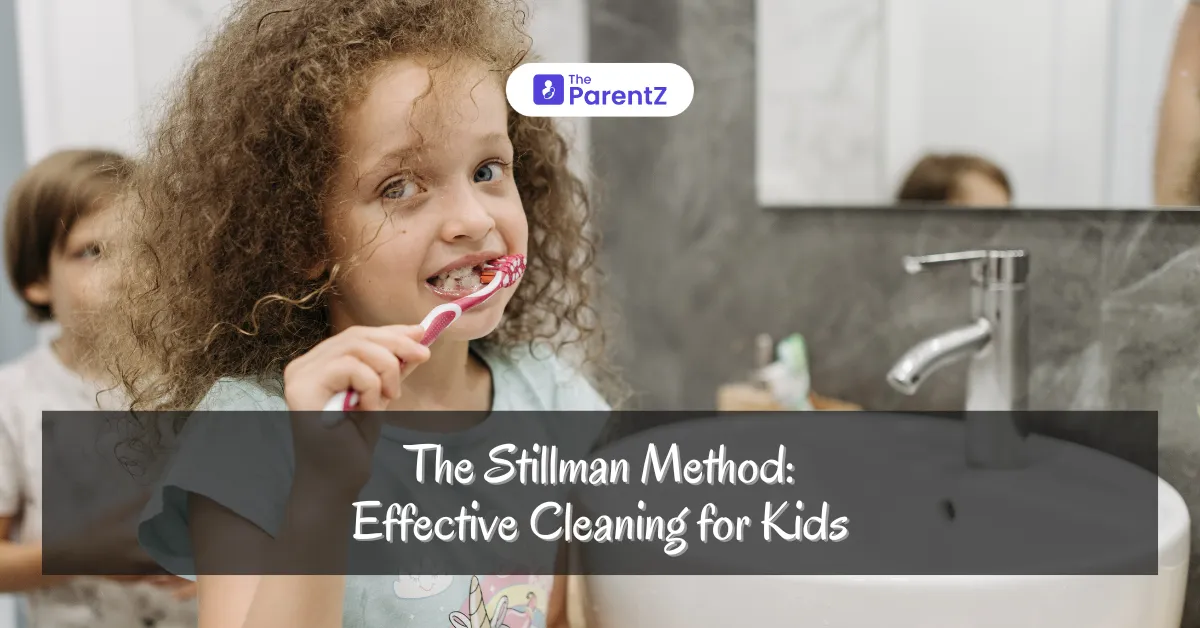Teaching children proper oral hygiene from an early age sets the foundation for a lifetime of healthy smiles. While many kids start with basic brushing techniques, some methods are more effective in ensuring thorough cleaning and gum health. One such technique is the Stillman Method—a dentist-recommended, gentle brushing approach that’s perfect for kids.
A Brief History of the Stillman Method
The Stillman Method was introduced by Dr. Paul H. Stillman, an American periodontist, in the early 20th century. Dr. Stillman developed this technique to help individuals, especially those with gum issues, maintain better oral hygiene. The method focuses on gentle, controlled brushing at the gum line to remove plaque effectively while also stimulating the gums.
Though initially designed for adults with periodontal concerns, dental professionals later recognized the technique’s benefits for children due to its gentle and effective cleaning approach.
What is the Stillman Method?
The Stillman Method involves placing the toothbrush bristles at a 45-degree angle so that they rest partly on the gums and partly on the teeth. Using gentle, vibratory back-and-forth motions, the bristles clean along the gum line where plaque tends to accumulate. This technique not only removes plaque but also gently stimulates the gums, promoting better blood circulation and overall gum health.
It’s particularly effective for:
• Children learning proper brushing techniques
• Kids with sensitive gums or early signs of gum inflammation
• Preventing gum diseases like gingivitis from an early age
How is the Stillman Method Different from Other Brushing Techniques?
The Stillman Method stands out because of its unique focus on the gum line and its gentle, controlled motion. Here’s how it differs from other common brushing techniques:
1. Bristle Position:
• In the Stillman Method, the bristles are placed partly on the gums and partly on the teeth at a 45-degree angle. This allows for effective cleaning along the gum line, which is often missed with other techniques.
• In contrast, the horizontal scrub technique involves flat, back-and-forth motions across the teeth, which can be harsh on both gums and enamel, especially if done with too much pressure.
2. Brushing Motion:
• The Stillman Method uses gentle vibratory movements, focusing on small, controlled strokes. This ensures plaque is removed without damaging the gums.
• The circular (Fones) technique, often taught to young children, uses large, circular motions. While effective for surface cleaning, it doesn’t target the gum line as thoroughly as the Stillman Method.
3. Gum Stimulation:
• The Stillman Method not only cleans teeth but also stimulates the gums, promoting healthy blood flow.
• The horizontal scrub technique lacks this benefit and can even cause gum recession over time if too much force is applied.
4. Effectiveness:
• The Stillman Method is highly effective for plaque removal, especially near the gums, where cavities and gum diseases often start.
• Other techniques, like horizontal scrubbing, may leave behind plaque near the gum line, increasing the risk of dental issues.
5. Suitability for Kids:
• The Stillman Method’s gentle, precise approach makes it ideal for kids, especially those with sensitive gums or orthodontic appliances.
• Techniques like aggressive scrubbing can be too harsh for young mouths and may cause more harm than good.
Benefits of the Stillman Method for Kids
1. Gentle on Gums: Prevents gum irritation and reduces the risk of bleeding, making it ideal for sensitive gums.
2. Promotes Healthy Gums: The gentle stimulation improves blood circulation, supporting strong and healthy gum tissue.
3. Effective Plaque Removal: Focuses on the gum line, where plaque often accumulates, reducing the risk of cavities and gum disease.
4. Prevents Enamel Erosion: By avoiding harsh scrubbing, the Stillman Method helps protect tooth enamel from wear and tear.
5. Easy to Learn: The technique is simple, making it easy for children to understand and practice with proper guidance.
Step-by-Step Guide: How to Teach the Stillman Method to Kids
1. Choose the Right Toothbrush:
• Pick a soft-bristled toothbrush designed for children’s smaller mouths.
• Bright colors or fun characters can make brushing more appealing to kids.
2. Apply the Right Amount of Toothpaste:
• For children aged 3 and older, use a pea-sized amount of fluoride toothpaste.
• For children under 3, a small smear (about the size of a grain of rice) is enough.
3. Position the Brush Correctly:
• Hold the toothbrush at a 45-degree angle to the gums.
• Make sure the bristles are half on the gums and half on the teeth to target the gum line effectively.
4. Use Gentle Vibratory Motions:
• Move the brush in small, back-and-forth vibrating motions.
• Focus on cleaning 2–3 teeth at a time before moving to the next section.
5. Cover All Tooth Surfaces:
• Outer surfaces: Work from one side of the mouth to the other, maintaining the same gentle motion.
• Inner surfaces: Tilt the brush vertically for the front teeth, using gentle up-and-down strokes.
• Chewing surfaces: Use light scrubbing motions to clean the flat surfaces of molars.
6. Brush the Tongue:
• Gently brush the tongue to remove bacteria and keep breath fresh.
7. Brush for 2 Minutes:
• Aim for at least 2 minutes of brushing. You can use a timer or play your child’s favorite song to keep them engaged.
8. Rinse and Smile:
• Rinse with water and encourage your child to admire their clean, shiny teeth!
Fun Tips to Make Brushing Enjoyable for Kids
• Brushing Games: Turn brushing into an adventure—pretend they’re fighting off “plaque monsters” or “tooth villains.”
• Toothbrushing Songs: Play a fun, 2-minute song to make brushing feel like less of a chore.
• Reward System: Use a sticker chart to track daily brushing habits and reward consistency.
• Family Brushing Time: Brush together as a family to model good oral hygiene habits.
• Mirror Motivation: Let your child watch themselves in the mirror to see how well they’re doing.
Common Mistakes to Avoid
• Brushing Too Hard: Kids may think brushing harder cleans better. Teach them that gentle pressure is key.
• Rushing the Process: Children often rush through brushing. Supervise to ensure they spend enough time on each section.
• Incorrect Angle: Not holding the brush at a 45-degree angle reduces the method’s effectiveness.
• Neglecting the Inner Surfaces: Kids tend to focus only on the front teeth. Remind them to brush the back teeth and inner surfaces too.
When to Introduce the Stillman Method to Kids
You can introduce the Stillman Method once your child develops enough fine motor skills to handle a toothbrush properly, usually around 4 to 6 years old. Before this age, parents should perform the brushing for them, gradually teaching the child to take over as they grow more confident.
Final Thoughts
The Stillman Method isn’t just for adult’s but an excellent technique for children, offering gentle, effective cleaning while promoting healthy gums. Its focus on the gum line and gentle vibratory motions make it ideal for kids, especially those with sensitive gums or orthodontic appliances.
By teaching your child the Stillman Method, you’re setting them up for a lifetime of strong teeth, healthy gums, and confident smiles. For personalized advice, consult your dentist to ensure your child’s brushing technique is spot on.






